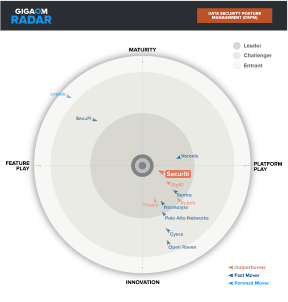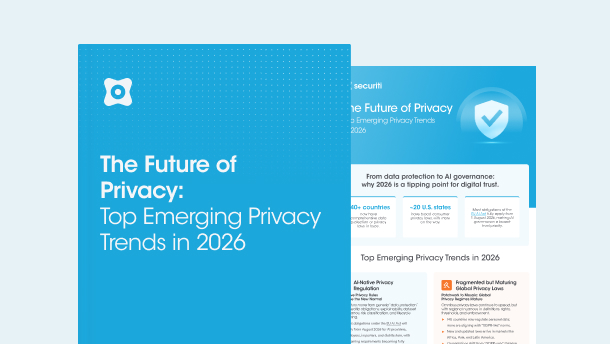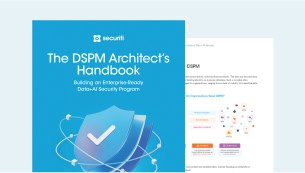In the modern business environment, effectively leveraging data is critical to an organization's success. Doing so ensures an unparalleled degree of efficiency in decision-making, with the most promising ventures receiving the appropriate financial investment. This results in an unprecedented level of success for businesses where sunk costs have been virtually eliminated. Hence, it makes sense for organizations to dedicate a similar barrage of resources to protecting their data assets.
There have been several high-profile instances where businesses have neglected to do so and have faced regulatory, financial, and reputational consequences as a result. Whether it’s Yahoo’s 2016 breach, Marriott International in 2018, LinkedIn in 2021, or Capital One in 2019, breaches can leave a lasting impact on an organization and severely dent consumers’ confidence in their ability to appropriately protect their data.
While these are just some of the high-profile examples, they are by no means isolated instances. More importantly, they highlight the importance of a clear, well-defined, and enforceable data security policy that enables an organization to defend itself against all manner of cyber threats, both internal and external.
The following blog delves deeper into why a data security policy is so vital for organizations, key elements to consider and include in it, and the steps involved in effectively implementing it across the organization’s infrastructure.
By understanding the critical components and implementing the best practices when adopting a data security policy, organizations can ensure they have the appropriate mechanisms and organizational culture in place to defend against any cybersecurity threats.
What is a Data Security Policy?
A data security policy is a formal and documented set of rules and procedures within an organization that lays out how the organization protects its data from all manner of digital threats, particularly unauthorized access, use, disclosure, alteration, or destruction. It is a blueprint for the effective management and safeguarding of all sensitive data in the organization’s possession, including customer information, intellectual property, or internal business records, stored across multiple departments and systems.
By clearly defining personnel’s responsibilities, acceptable practices, and effective controls, the policy ensures that an entire framework is in place within an organization to ensure the responsible handling of data.
As a resource, it is vital in supporting regulatory compliance while demonstrating to customers and partners the organizational steps taken to protect their data against all relevant threats. In short, it is both a strategic safeguard and a practical playbook that has all the necessary information to reduce data exposure risks while elevating an organization’s capability to counter emerging threats to its data.
Why Do You Need a Data Security Policy?
It is important to consider and treat data security policy as more than just a simple “box that needs ticking”. In modern business conditions where data is both a vital asset and responsibility, it is a strategic necessity to have it appropriately embedded within the organization’s data operations to avoid the potential data breaches, reputational damage, and regulatory fines that may follow in its absence. Without the clear guidelines established per a data security policy, organizations leave themselves vulnerable to consistent and unchecked internal errors that can lead to all manner of damage in both the short and long term.
There’s a litany of examples to corroborate this fact. Consider Equifax’s case. One of the three largest consumer credit reporting agencies in the world, it processes the financial information of nearly 800 million individuals and more than 80 million businesses globally. And yet, in 2017, it suffered what is today considered one of the largest data breaches in history, with 140 million users affected (40% of the entire population of the US). It led to what can only be described as a “colossal operational nightmare” for the company, as it cost Equifax $1.5 billion to completely overhaul its data security infrastructure to remedy the situation.
While the financial repercussions of not having a data security policy may be an acceptable justification for its implementation, the policy offers a lot more than just that. A well-defined data security policy is a tremendous resource in establishing trust with both customers and partners alike. Communication of an organization’s attitude and considerations via the data security policy sends a signal of reliability and responsibility.
Businesses do extensive background research and scrutiny of their potential vendors’ data practices when making business decisions, making such comprehensive documentation of data security practices is a vital competitive advantage for firms.
What to Include in a Data Security Policy?
An effective data security policy must be both comprehensive and clear in laying out the necessary guidelines on how data is to be managed across the organization. The key elements of such a policy include details on the following:
Data Classification
Data classification involves the appropriate identification and categorization of data resources within an organization based on their sensitivity, jurisdiction, and importance to business operations. In most cases, data classification involves extensive labeling of all data into categories based on the organization’s needs and relevant regulatory requirements, such as confidential, sensitive, internal-use, and public. With such classification, it can be easily determined how each individual asset is to be handled, stored, accessed, used, shared, and disposed of based on its unique context and characteristics.
More than its operational benefits, which optimize data management across the organization, it ensures all employees handling the data can access such resources within the appropriate security measures in place, such as appropriately encrypting highly sensitive financial or IP data and restricting access to authorized personnel.
Access Control
Access controls, or more specifically, effective access controls, are one of the fundamental pillars of a sound data security policy that ensures only the most relevant individuals within an organization have access to view, manage, and modify the data resources. Organizations leverage a combination of role-based access controls (RBAC) and the principle of least privilege (PoLP) to assign such permissions that are based strictly on the individual’s roles, responsibilities, and relationship to data resources within an organization. Doing so not only minimizes the risks associated with unauthorized access, inadvertent disclosures, and insider threats but also establishes a chain of accountability in case such an incident does occur.
Along with such access control measures, organizations typically layer them up with additional methods, including multi-factor authentication (MFA), biometric verification, and robust password policies, which further reduce any potential vulnerabilities.
Data Storage and Encryption
Data storage and encryption practices are vital in guaranteeing the security of sensitive information against potential unauthorized access, theft, or misuse of data. To ensure organizations’ data storage and encryption practices are on par with both regulatory requirements and industry standards, they must have specific storage guidelines that elaborate on acceptable platforms and procedures to adequately protect data at both rest and in transit.
Most organizations can adopt industry-standard encryption protocols, such as AES-256-bit encryption, which ensures that data remains unintelligible to unauthorized parties even if storage resources are compromised. However, organizations that wish to have the most sophisticated encryption protocols in place for particularly sensitive data can opt for either lattice-based or elliptic curve-based cryptography.
Additionally, guidelines for securely backing up all critical data can ensure data availability in cases of data loss or ransomware attacks, with periodic audits to test and validate the effectiveness of the storage security measures in place.
Data Sharing Guidelines & Awareness Training
Far too often, employees end up using data resources in a manner non-consistent with regulatory requirements simply because they were not appropriately trained and informed about such requirements. Clear and enforceable guidelines that outline who is authorized to carry out what actions related to data, along with secure methods for doing so, ensure that data is never vulnerable to accidental exposures or subject to employee negligence.
Moreover, these guidelines can specify the exact methods and approved channels by which data is to be shared and managed, such as encrypted emails, secure FTP, or dedicated data-sharing platforms. These can be extended to data-sharing protocols with third parties, ensuring that external entities that will have access to such data uphold similar standards of data security.
Documentation of such measures adds an element of accountability and traceability, which can help organizations mitigate future issues and undertake remedial measures with greater accuracy in case of a future breach.
Lastly, employees should be consistently and adequately trained on how best to follow and adapt these guidelines in their daily operations. Interactive training sessions that leverage simulations can help organizations identify areas where employees need more training, which can be improved in future training programs.
Overall, this helps create a security-conscious culture across the organization. Appropriate guidelines and policies ensure data security principles are upheld and employees are adequately trained to perform their tasks in light of these guidelines.
Incident Response Plan
An incident response plan helps organizations minimize the impact of a data breach while also being critical in plugging any gaps that can make a bad situation worse. It defines all the roles and responsibilities in the aftermath of a breach, providing useful guidelines on each personnel’s responsibilities, including the investigation and the eventual communication of the breach per regulatory requirements.
Designed and executed properly, these plans can be vital in minimizing response times while also restricting the damage and the associated costs.
The plan must be thoroughly and consistently tested through simulated drills and breaches that help play out how the plan will be executed in the event of an attack. Not only does this provide insights into the preparedness and effectiveness of the employees in executing their responsibilities per the plan, but the lessons learned can be used in follow-up reviews to update the response plan and strategy to ensure they align with emerging threats, technological developments, and other factors that are relevant and necessary to be considered.
Steps to Implement an Effective Data Security Policy
Assess Current Security Measures
Before organizations can initiate drafting and implementing new data security measures, they must conduct a thorough assessment of their existing security posture to identify all the strengths, vulnerabilities, and gaps. Data from previous penetration tests and other compliance audits can be helpful in this case and highlight all the areas that require the most immediate attention.
Furthermore, a closer inspection and analysis of any past incidents, breaches, or close calls can also provide useful context and insights into any recurring issues or overlooked factors that may be relevant. Once done, the findings must be appropriately documented, with the results being shared with all the relevant stakeholders to ensure organizational buy-in and lay the foundation for future improvements and a way forward for the data security policy.
Engage Stakeholders
Collaboration is critical to the eventual success and overall effectiveness of the data security policy. The policy will require multiple departments and individuals to consistently remain engaged, along with senior leadership, to provide diverse perspectives and considerations to ensure it addresses all the major operational needs and concerns of all the departments. Additionally, this ensures an environment of collective ownership, and regular meetings help the stakeholders understand their roles and responsibilities clearly.
Moreover, any conflicts or issues can be proactively identified, addressed, and mitigated to avoid them becoming major operational issues going forward or leading to unnecessary inefficiencies.
An effective data security policy should be accompanied by an equally capable array of solutions that make its enforcement and monitoring easier and more reliable. These solutions include data classification software, encryption solutions, secure file-sharing platforms, or identity and access management systems that align with the policy requirements. Moreover, these tools facilitate automation, enabling greater efficiency and visibility into the policy’s enforcement across the organization.
Organizations can determine the suitability of these tools based on a combination of factors such as integration capabilities, scalability, user-friendliness, and alignment with regulatory compliance needs. In any case, investments in such tools make data security policy enforcement comparatively easier, ensuring such measures are effective, agile, and well-placed to counter any new and emerging threats.
Review and Update Regularly
Data security must never be a static process. Threats evolve constantly, and so should the policies intended to thwart them. Regular reviews and updates of the data security policy are essential in ensuring the implemented measures continue to offer an appropriate level of protection for the organization’s data resources. Such periodic assessments can be scheduled based on each organization’s requirements to ensure the policy is kept updated following significant events or developments that are relevant to the organization’s data security.
Such developments include, but are not limited to, evolving industry trends, regulatory updates, and recent cyber incidents. These can help organizations anticipate and address potential risks before they become operational threats. Furthermore, soliciting and incorporating stakeholders’ and employees’ feedback can also help ensure the policy remains relevant and effective to counter any emerging issues.
How Securiti Can Help
Securiti’s Data Command Center is an industry-leading DSPM platform that enables the safe use of data+AI. It provides unified data intelligence, controls, and orchestration across hybrid multicloud environments. Several of the world's most prestigious corporations rely on Securiti's Data Command Center for their data security, privacy, governance, and compliance needs.












































